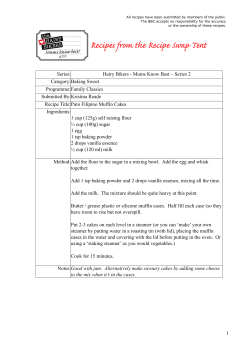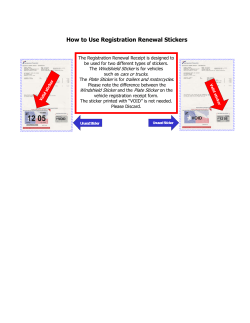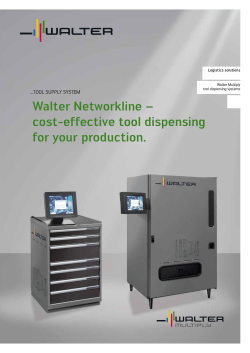
How does the LID Ordinance affect me? What is LID?
What is LID? Low Impact Development (LID) is a leading stormwater management strategy that seeks to mitigate the impacts of runoff and stormwater pollution as close to its source as possible. Urban runoff discharged from municipal storm drain systems is one of the principal causes of water quality challenges in most urban areas. It can contain pollutants such as trash and debris, bacteria and viruses, oil and grease, sediments, nutrients, metals, and toxic chemicals that can adversely affect the ocean, rivers, plant and animal life, and public health. What is the LID Ordinance and how does it apply to you? The City of LA needs your help to build sustainable projects that capture, treat and reuse rainwater to help make neighborhoods greener. LID consists of site design approaches and Best Management Practices (BMPs) that are designed to address runoff and pollution at the source. These LID practices can effectively remove nutrients, bacteria, and metals while reducing the volume and intensity of stormwater flows. The Ordinance was developed by LA Sanitation in collaboration and coordination with community members, environmental organizations, business groups and the building industry. Photo taken at the WaterMarke Tower in Downtown Los Angeles. City staff and the building developers devised creative solutions that made it possible for this property to be water friendly, such as the green roof you see featured in this picture. It’s a great example of how every project, regardless of green space limitations, can incorporate LID practices. How does the LID Ordinance affect me? The LID ordinance requires rainwater from a three-quarter inch rainstorm to be captured, infiltrated and/or used onsite at most developments and redevelopments where more than 500 square feet of hardscape is added. Most single family residences can comply in even simpler ways by installing adequate Best Management Practices (BMPs) such as rain barrels, permeable pavement, rainwater storage tanks, or infiltration swales to contain the water. When did the LID Ordinance become effective? The ordinance was adopted in November 2011 and will officially become effective on May 12, 2012. The main purpose of the LID Ordinance is to ensure that development and redevelopment projects mitigate runoff in a manner that captures rainwater at its source, while utilizing natural resources. How is LID different from the Standard Urban Mitigation Plan [SUSMP]? The LID Ordinance requires stormwater mitigation for a larger number of development and redevelopment categories than was previously required under SUSMP. All development and redevelopment projects that create, add, or replace 500 square feet or more of impervious area need to comply with the LID Ordinance. LID is the most effective & cost-efficient means of managing stormwater & reducing water pollution. Other LID benefits include: • water conservation • groundwater recharge • greening communities To learn more about LID download the Development Best Management Practices Handbook by visiting LAstormwater.org Printed on Recycled Paper EXAMPLES are, but not limited to... OR AND IN AN ESA Project is: than 500 SQ FT? YES I must COMPLY with LID. Project is: (4 units or less) All Other Developments. NO 2500 SQ FT. or MORE e.g. Commercial Industrial Automotive Residential, EXEMPT from LID. * Capture & Manage 100% of ¾- inch storm event of required area* (5 units or more) I am PLA NT E *For alterations less than 50% of the existing impervious surface, only incremental development shall comply with LID. Dry Wells and/or... OX ES You have Project is: AND and/or... 5. LE EABT M ER MEN VE ONE ACRE or GREATER IN AN ESA Rain Gardens and/or... SUCCESSFULLY COMPLIED DR YW OR Project is: and/or... LID BMPs * Residential. and/or... Planter Boxes with the LID ordinance. LLSS EELL GREATER Permeable Pavement RR LESS THAN 2500 SQ FT. LS RE Rain Barrels 4. RA R N NN AIIN GA G DEE AR RD SS The Road to LI D Starts Here: 3. PPAA PP Project is: LESS THAN ONE ACRE 2. 1. 5 BMP Implement adequately sized LID Best Management Practices [BMPs]. BB The City of LA will review all plans for new development and redevelopment projects to ensure that the appropriate BMPs are incorporated to address stormwater pollution prevention goals. During the review process, the plans will be reviewed for compliance with the City’s General Plans, zoning ordinances, and other applicable local ordinances and codes, including stormwater requirements. The reviewer will also determine if project designs need to be modified to address stormwater pollution prevention objectives. Depending on the scale and the type of the project, the review and approval process can take between 2-6 weeks. Low Impact Development [LID] Road Map for Residents and Developers RRAA BBAARRIINN What is the plan approval process? 4. Combination of above *ESA: Environmentally Sensitive Area Implement LID Best Management Practices [BMPs]. And maximize in priority order... 1. Infiltrate 2. Capture and Use 3. High efficiency Bio-Filtration /Retention System BMP
© Copyright 2025





















